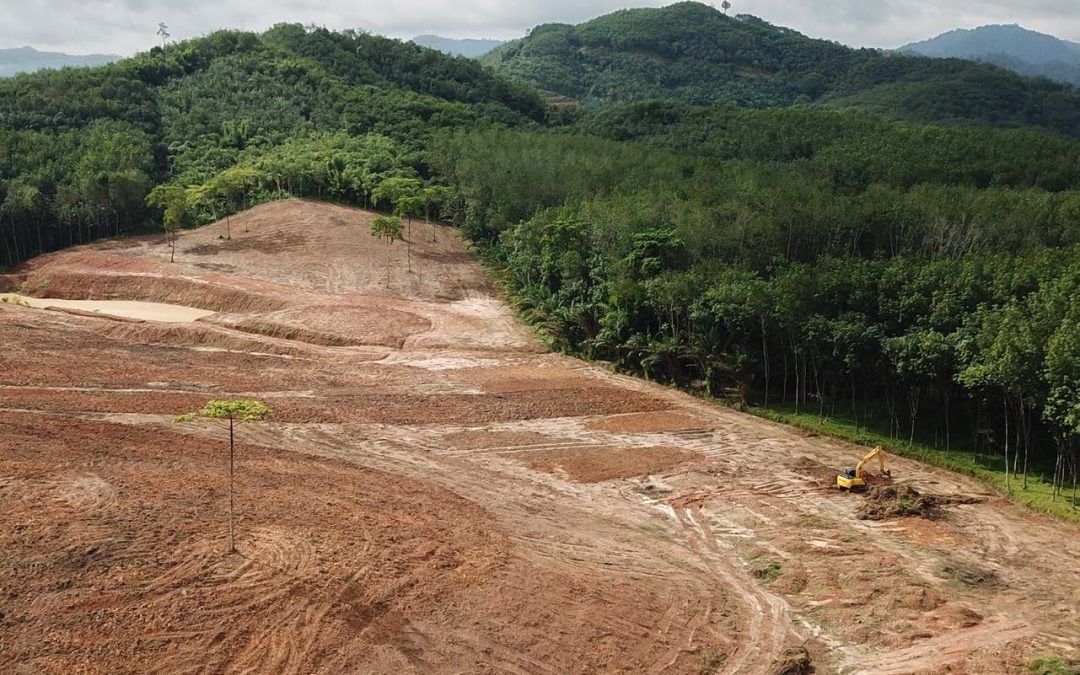Image source and acknowledgement: The Land Gap report
The pressure on land in carbon dioxide removal
In response to climate change, governments are increasingly relying on land for carbon dioxide removal. This is particularly true in Australia, notorious for its use of land in the Kyoto Agreement. Even today, the government’s proposed reforms to the Safeguard Mechanism do not deliver allowing high-emitting companies to offset instead of reduce emissions, and most of these offsets are land-based. This has been described by The Australia Institute as a “dangerous loophole.”
The growing momentum for climate mitigation has given rise to a new urgency around safeguarding the sustainability of ecosystems, land use and social justice. But at least 70 per cent of global land is already impacted by human use.
Serious concerns
Net zero pledges by country Parties to the United Nations Framework Convention on Climate Change (UNFCCC) already cover 83 per cent of global greenhouse gas (GHG) emissions, and additional pledges are coming from non-state actors, including the private sector.
While this climate mitigation momentum is crucial to keep global warming within the temperature goal of the Paris Agreement, these pledges often rely on land-based carbon dioxide removals (CDR), which are then used to offset a theoretically equivalent amount of fossil fuel emissions in national greenhouse gas inventories.
The much-needed momentum on climate action raises serious concerns if the mitigation burden is shifted away from reducing fossil fuel emissions and onto land, local communities and ecosystems.
More land than the United States
The Land Gap report was released in November 2022 and was the first effort to quantify the area of land that would be needed to deliver carbon-dioxide removal in the net-zero climate targets of governments.
A key finding of the report is that countries’ climate pledges would require almost 1.2 billion hectares of land to be prioritized for carbon dioxide removal. This land area is larger than the United States of America (983 million ha), and almost four times the area of India (329 million ha).
Several threats are posed
Even more concerning is that over half of the land needed to fulfil climate mitigation pledges – 633 million ha – requires a land-use change through plantations and establishing new areas devoted exclusively to forests, which
will compromise the rights of indigenous peoples, other human rights, livelihoods and food sovereignty (including the ability of local communities and smallholder farmers to feed themselves).
And there is a time delay we cannot afford. Carbon dioxide removals achieved through plantations, afforestation and reforestation, will take a long time and hence not be sufficient in the next critical decade to contribute very much to limit peak global warming.
A more promising use of land
The other half of the 1.2 billion ha for carbon removal – 551 million ha – includes activities to restore degraded lands, including agroforestry, reduced harvest and regenerating degraded forests.
This approach of seeking to maintain and augment carbon stocks in existing ecosystems holds more promise for climate and biodiversity and poses fewer threats to other dimensions of sustainability.
However, the potential area available for expanding forest cover is uncertain and depends on restoration approaches which respect human rights and focus on the restoration of ecosystem function. Improved governance and stewardship of land and territories focused on these goals is sorely needed to achieve multiple inter-related objectives.
Key messages of the report
- The ‘net’ in net zero must not distract from emissions reductions now. Framing climate targets as ‘net zero’ risks undermining mitigation action by allowing a trade-off between emissions reductions and removals.
- Ecosystem restoration as a removal could help get us closer to 1.5 °C if emissions reductions in all sectors happen now.
- We don’t have the land availability for unrealistic removals claims. There is no available land for expanding energy crop or monoculture plantations.
- Focusing on tree planting deflects attention from the urgency, immediate and multiple benefits of protecting and restoring forest ecosystems. Keeping existing forest ecosystems healthy and functional is the most important contribution of land towards meeting a 1.5 °C temperature limit by avoiding emissions and maintaining stable carbon stocks.
- Agroecological principles contribute to climate change adaptation and mitigation by restoring and enhancing ecosystem functions and services, while respecting and strengthening livelihoods (particularly of indigenous peoples and local communities) providing enough healthy and diverse food, and fostering human rights promotion and realization.
Register for the Lighter Footprints Land Gap report March event
To hear the lead author of The Land Gap report, Dr Kate Dooley from the University of Melbourne’s Climate College talk about this ground-breaking study and ask your own questions, register here.
References
The Land Gap Report and Executive Summary can be downloaded here.
Podcast
Listen to Dr Kate Dooley talk about the findings of The Land Gap report in the context of climate change action in the November 11 2022 episode of The Land & Climate podcast.
Further reading from Dr Kate Dooley
‘Nature restoration no substitute for cutting fossil fuels‘; Pursuit, 2022
Acknowledgement
Much of the text for this post was taken from the Executive Summary of the Land Gap report
Other References:

